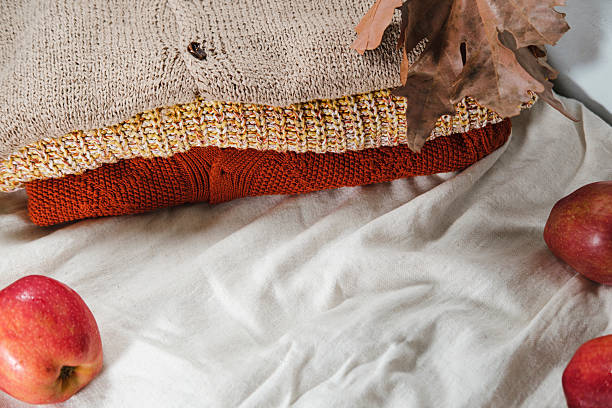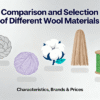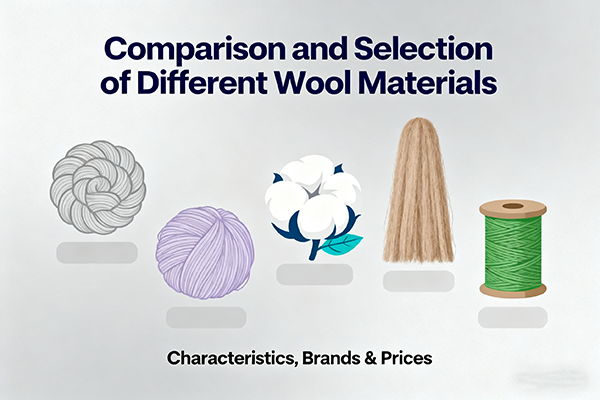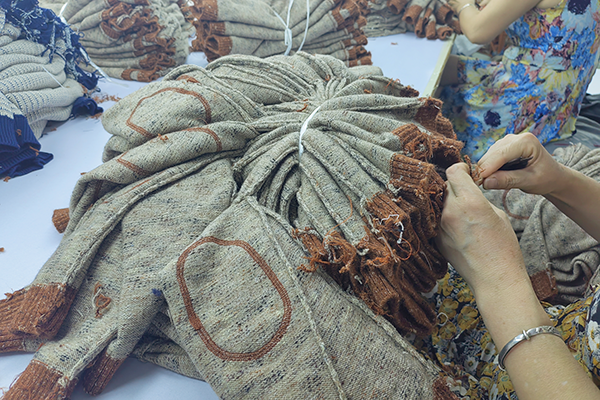In recent years, the concept of minimalism has expanded beyond interior design and into fashion. More consumers are turning toward minimalist sweater outfits that reflect both personal simplicity and environmental awareness. A minimalist winter wardrobe is not only elegant but also deeply practical—it keeps you warm while reducing unnecessary consumption. As sustainability becomes a global movement, sweaters made from eco-friendly materials have become the foundation of responsible fashion.
The Philosophy Behind a Minimalist Sweater Wardrobe
Minimalism in fashion is about choosing fewer but better pieces. It means curating garments that blend functionality, comfort, and timeless design. A minimalist wardrobe prioritizes quality over quantity. In winter, sweaters play a vital role because they offer versatility, durability, and style.
Instead of chasing fast-changing trends, minimalist fashion encourages wearing clothing that lasts for years. Neutral tones, simple silhouettes, and high-quality materials define this approach. A minimalist sweater outfit embodies understated confidence—where every piece serves a purpose.
Sustainability fits perfectly within this philosophy. By investing in sweaters crafted from organic cotton, recycled yarn, or ethically sourced wool, wearers support an eco-conscious lifestyle while enjoying superior comfort.

Choosing the Right Fabrics for Sustainability
Fabric selection defines both the comfort and environmental impact of a winter wardrobe. For a truly sustainable minimalist sweater outfit, material choice must align with ecological values.
Organic Cotton Sweaters offer breathability and softness while avoiding pesticides and harmful dyes. They are ideal for layering and are easy to maintain.
Merino Wool Sweaters are temperature-regulating, meaning they keep you warm without overheating. Ethically sourced merino wool ensures animal welfare and a minimal environmental footprint.
Recycled Wool and Cashmere provide the luxury of traditional fibers while reducing textile waste. These fabrics help extend the lifecycle of garments that would otherwise end up in landfills.
Tencel and Bamboo Blends represent the future of sustainable knitwear. They are silky, hypoallergenic, and biodegradable—perfect for those seeking comfort with conscience.
Selecting the right fabric isn’t just a matter of style; it’s a reflection of values. Eco-friendly materials allow fashion lovers to embrace warmth and responsibility simultaneously.
Essential Sweater Styles for a Minimalist Wardrobe
A minimalist winter collection doesn’t mean sacrificing variety. The key lies in selecting adaptable sweater styles that can mix and match effortlessly.
1. The Classic Crewneck – Timeless and versatile, it pairs with jeans, skirts, or tailored trousers. Its simplicity ensures longevity in any wardrobe.
2. The Turtleneck Sweater – A winter essential that conveys sophistication. It layers seamlessly under coats and blazers while adding instant elegance.
3. The Oversized Knit – Comfort-driven yet modern, it embodies the cozy side of minimalism. Perfect for relaxed weekends or travel days.
4. The Cardigan – The ultimate layering piece that bridges comfort and functionality. Neutral cardigans create depth in capsule wardrobes.
5. The Half-Zip or Polo Sweater – These contemporary designs combine sportiness with refinement, ideal for transitioning between casual and formal settings.
Each piece should harmonize with others, forming a cohesive collection. Neutral hues—such as beige, charcoal, and soft cream—keep the wardrobe balanced and effortlessly chic.
Layering Techniques for Minimalist Warmth
Layering transforms simplicity into sophistication. The art of layering in a minimalist winter wardrobe lies in balance—combining textures without clutter.
Start with a lightweight base, such as an organic cotton turtleneck. Add a mid-weight sweater, like merino wool, for warmth. Finish with a structured coat in a neutral shade. The result is refined yet functional.
Layering also reduces the need for multiple bulky garments. By strategically combining pieces, you maintain warmth while expressing individuality. Accessories like scarves and beanies in natural fibers complete the look without excess.

The Role of Color and Texture in Minimalist Design
While minimalism often emphasizes neutral colors, texture plays an equally important role. Subtle variations in knit patterns—ribbed, cable, or waffle textures—add visual depth without overwhelming the outfit.
Monochrome dressing, such as pairing a beige turtleneck with cream trousers, creates a cohesive aesthetic. Meanwhile, a pop of deep olive or warm burgundy can introduce seasonal character while maintaining simplicity.
Texture adds emotional warmth to minimalist design. A soft cashmere sweater can elevate an outfit without needing bold colors or embellishments. This quiet luxury defines the heart of modern sustainable fashion.
The Importance of Quality Over Quantity
One of the core principles of sustainability is longevity. A minimalist wardrobe emphasizes durable construction, careful craftsmanship, and timeless appeal.
High-quality sustainable knitwear resists pilling and deformation, ensuring it remains stylish after many seasons. Brands committed to ethical production often use reinforced stitching, natural dyes, and traceable materials. By prioritizing durability, consumers can significantly reduce fashion waste.
Buying fewer, better items not only supports sustainable practices but also promotes mindful living. Each purchase becomes a deliberate decision, reflecting personal taste and environmental awareness.
How to Care for Sweaters Sustainably
Sustainability doesn’t end with purchase—it extends into garment care. Proper maintenance preserves both texture and longevity.
Use cold water washing and mild detergents to protect delicate fibers. Avoid tumble drying to reduce energy use and fiber stress. Instead, reshape sweaters and dry them flat. Storing folded rather than hung prevents stretching.
Small habits like these extend the lifespan of every sweater and minimize ecological impact.
Building a Capsule Wardrobe Around Sweaters
A capsule wardrobe built around minimalist sweaters offers endless versatility. A few well-chosen pieces can create dozens of outfits.
Combine a turtleneck with tailored trousers for the office, switch to denim for weekends, or layer under a long coat for travel. Each combination remains simple yet elegant.
This approach not only saves closet space but also encourages thoughtful styling. The key is adaptability—every sweater should integrate easily with the rest of your collection.
The Emotional Side of Minimalist Dressing
Beyond functionality, minimalist dressing influences mindset. Simplifying your wardrobe reduces decision fatigue and fosters confidence. Knowing that every item serves a purpose creates a sense of harmony.
Sustainable minimalist fashion is not about restriction but liberation. It frees individuals from trend cycles and encourages authentic self-expression. A minimalist sweater outfit thus becomes both a fashion statement and a personal philosophy.
Conclusion: The Future of Minimalist Winter Fashion
As sustainability continues to shape the fashion industry, the minimalist winter wardrobe stands out as a symbol of responsible elegance. Eco-friendly sweaters bridge comfort, conscience, and timeless design.
Choosing sustainable fabrics, embracing neutral tones, and focusing on craftsmanship allow wearers to enjoy warmth without compromise. This movement goes beyond aesthetics—it reflects a collective shift toward mindful living.
In a world overwhelmed by overproduction, the minimalist sweater outfit reminds us that less truly is more. Each stitch represents not only style but a commitment to a better planet.








